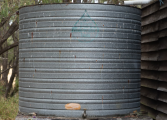By Page H. Gifford
Correspondent
Contrary to what some might believe, farming is thriving in Fluvanna, from cattle to orchards to bees. Wineries are also growing in the area Though perhaps slightly more glamorous than sloshing through manure to feed cattle, they still utilize the land and produce a product from it. Farmers in Fluvanna are carrying on the family tradition through generations. For the current generation of farmers, it’s a vibrant community creating modern farms with acreage and ambition, recognizing their roots and embracing change.
According to the 2022 USDA Census, Fluvanna is home to 289 farms, a six percent increase since 2017. These farms span nearly 50,000 acres, marking an eleven percent growth in land use. The average farm size has reached 171 acres, up five percent, and the market value of products sold has soared forty-five percent to $8.9 million. Crop sales dominate at 77 percent, with livestock, poultry, and related products making up the remaining 23 percent.
Corn and tobacco became the most important crops in Virginia’s history. Corn was the most sought-after grain of the colonists and was used by Native Americans as a major bartering tool. Tobacco helped Virginia natives form the economic basis of the first successful English colony in North America.
The next chapter of farming in Fluvanna was corn, hay, and livestock, but cattle farming is still being carried on through generations. Channing Snoddy, a cattle farmer and president of the Fluvanna Farm Bureau, raised beef cattle and hay on his farm in Troy.
“I’ve been doing this since I was 16. Maybe I’m just dumb enough not to know any better, but it’s part of me,” he said, laughing, while standing with the cattle roaming around him on a golden sunny morning.
The Haislip family has deep roots in farming for generations. Shannon Haislip carries on the tradition of his great-grandfather.
“He used to grow a little wheat and corn and had hogs and beef cattle,” he said. Today, Shannon Haislip has over 1,000 acres of corn, wheat, soybeans, and hay. “Once it’s in your blood, you can’t stop, it’s one of those things, it’s generational.”
Blake Haislip is looked upon as the representative for young farmers. As vice president of the Fluvanna Farm Bureau, he owns a cattle farm on nearly 200 acres in Carysbrook, where he has built his herd from 20-25 beef cattle. His wife, Sarah, manages a full-time horse farm where she teaches riding.
Today, cattle farming remains central, but new agricultural ventures are determining the landscape, particularly beekeeping. Amanda Sweeney of Edgewood Apiaries and Farm, who left a corporate job in 2021 to manage her 112-acre farm outside Fork Union. A twelfth-generation farmer, she started with 63 colonies and now manages around 100 honeybee colonies, aiming to expand to 150. Unlike larger farms that may look at production, profit, and sustainability differently, Sweeney and other farmers like her are embracing a natural and sustainable environment, which is an advantage for smaller farms. She improves biodiversity by planting wildflowers and prioritizing genetic diversity in her hives.
Abigail and David Stuart of Fruit Hill Farm, in the heart of Fluvanna, near Palmyra, are always swamped with visitors during their summer and fall season. Abigail’s grandfather started the farm 25 years ago when he planted 1,000 apple trees.
“On a Saturday from late September through October, we get visitors from as far away as Front Royal to Richmond,” said David.
Abigail summed it up best about her legacy when she said, “Having a child of your own makes you think about the legacy that has been passed onto you and the legacy you hope your children will carry on.”
Fluvanna’s evolution from tobacco and corn to beef and bees depicts an agricultural story; that’s as much about sustainability and innovation as it is about heritage and hard work.




